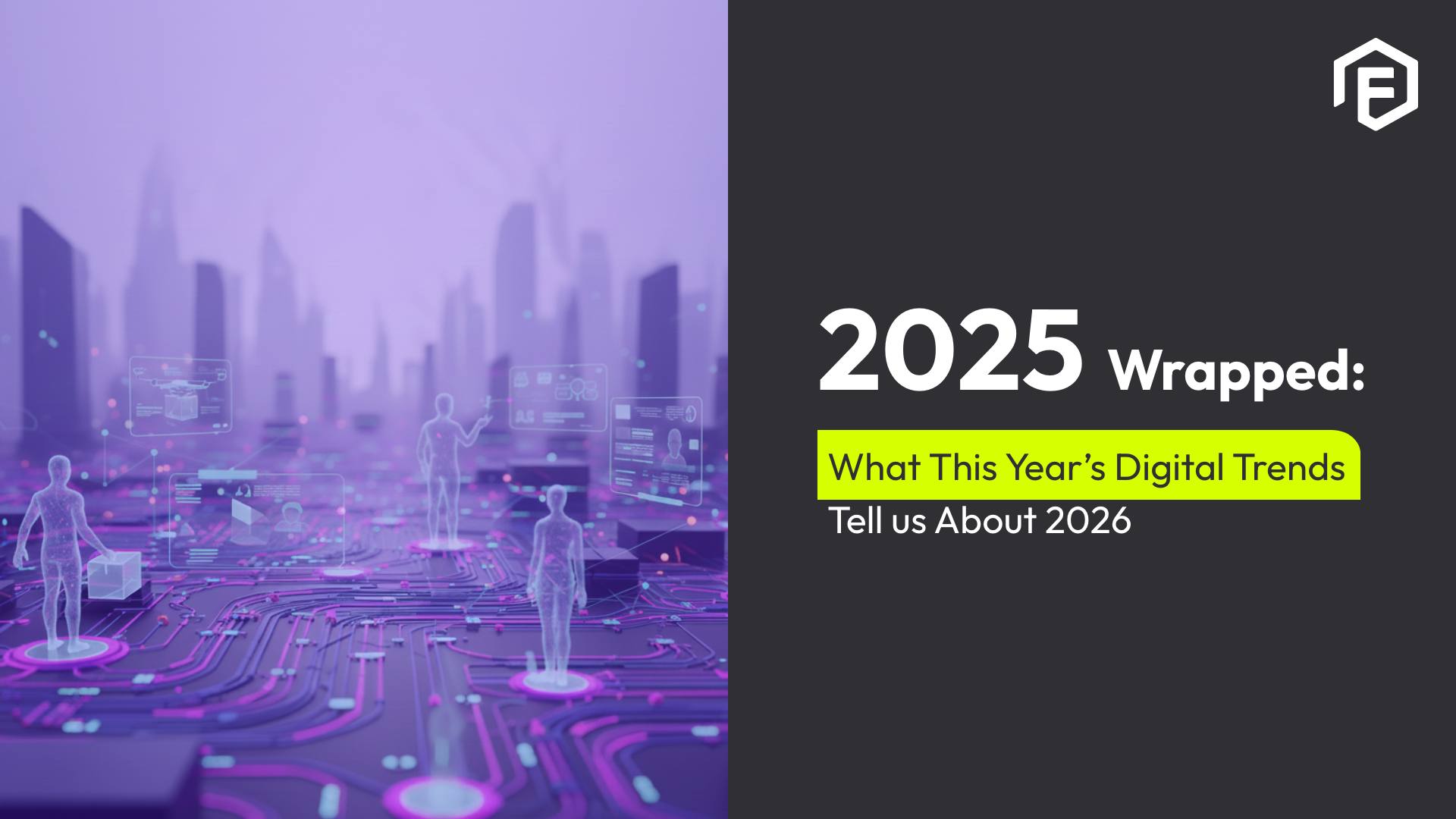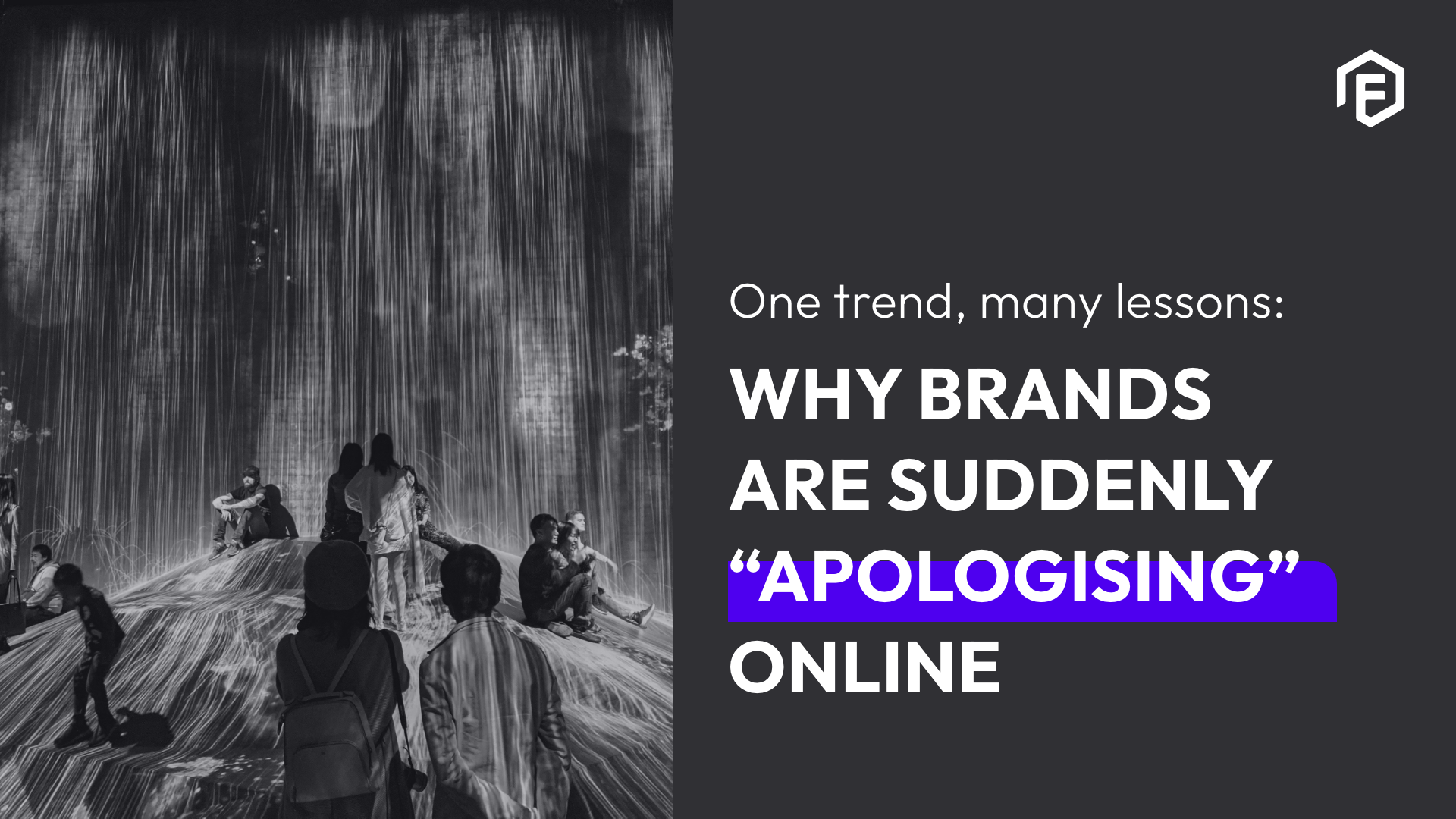There’s no denying it: AI has seeped into almost every part of our lives. And with every update, it’s getting better at sounding human, looking polished, and mimicking reality. However, just because it seems real, doesn’t mean it is. People can tell, especially in your marketing. And when they do, it can chip away at your brand’s credibility.
Using AI to support your content creation can be efficient, even helpful. But when you let it do all the heavy lifting, it quickly starts to feel lazy and deceptive. And that’s when it starts cracking your credibility.
So, what are the telltale signs you’ve used AI? And how can you use it without damaging the trust you’ve built with your audience?
So glad you asked.
Does It Matter If It’s AI?
Well, yes and no. The issue isn’t that AI is being used; it’s how it’s being used. In the rush to do more with less, brands are turning to tools that promise speed and volume. And while those things are great in theory, they come at a cost. When AI-generated content makes its way into marketing without any real human oversight, it’s painfully obvious. Not always to everyone, but to the people who pay attention, the ones who are already sceptical of advertising, or who’ve learned to spot the signs? It’s a red flag.
Audiences are more media-literate than we give them credit for. They pick up on language that feels too perfect. They notice when visuals look slightly… off. And when something doesn’t sit right, they instinctively pull away. That kind of subconscious distancing is hard to measure, but it’s powerful. It weakens trust, especially in industries that promise transformation, authenticity, or expertise. When the content doesn’t feel real, the brand doesn’t either.
The Problem with Flawless Writing
AI-generated copy often looks right at first glance. The structure is clean. The grammar checks out. The tone is upbeat, polite, and broadly “helpful.” But if you’ve ever read something that felt a little hollow, you already know the issue. It doesn’t sound bad, but it just doesn’t sound like anyone either.
There’s no opinion. No edge. No real texture. That’s because AI isn’t writing anything new; it’s remixing. It leans heavily on clichés, vague phrasing, and recycled ideas that could apply to just about any brand, anywhere. Add in a few jarring tone shifts or copy-paste transitions, and suddenly, the voice disappears. You might as well open with, “This was written by AI.”
But the unfortunate reality is this: it might still “perform.” You might get clicks. You might rank. But if your audience doesn’t connect, if the content feels generic or unedited, the trust doesn’t last.
And Google’s noticing, too. It doesn’t care how content is made, but it does care about quality. Specifically: Experience, Expertise, Authoritativeness, and Trustworthiness (E-E-A-T). Content that doesn’t meet those standards won’t go far.
If people can tell it’s AI, chances are, Google can too. And that’s when the performance stops mattering.
Credibility isn’t built on polish. It’s built on presence. And AI, no matter how advanced, hasn’t quite mastered that part yet. So, here’s what to do and what to avoid:
Do this | Avoid this |
Write the way real people speak. Keep it warm, casual, and clear. | Defaulting to AI buzzwords like fostering, delve, ever-evolving landscape, or navigate complexity. |
Use punctuation correctly. Not because ChatGPT added it. | Overusing em dashes — like — this — for — everything. Commas save lives. And your writing. |
Copy, paste, EDIT. Reformat your copy after using the tool. | Leaving in “smart quotes” from AI-generated text. When you copy text from ChatGPT, it includes quotation marks when you paste. Leaving these in gives you away instantly. |
Use natural transitions like “also” or “but” | Overusing formal connectors like “Moreover,” “Thus,” or “In conclusion” |
Be specific and grounded in your messaging | Relying on vague buzzwords like “innovative solutions” or “game-changing strategies” |
Stick to relevant metaphors that align with your brand | Mixing unrelated metaphors (e.g., combining space and gardening themes) |
Maintain a consistent tone throughout your content | Shifting abruptly from conversational to formal tones |
Tailor language to your audience’s context | Using culturally mismatched references (e.g., Americanisms for a South African audience) |
The Problem with AI-Generated Design
Smooth, clean, hyper-realistic: These are the beautiful qualities of AI-generated visuals. And also exactly what gives them away. Much like the copy, AI-generated visuals often fall into the uncanny valley where things look almost right, but not quite. And once you notice what’s off, you can’t unsee it.
It’s the overly perfect skin texture, oddly shaped hands, distorted jewellery, and the hair that looks like it was painted on with a plastic brush. It’s also the lighting or shadows that don’t quite line up, and backgrounds that melt into weird, non-Euclidean geometry if you stare too long.
And when these things show up in marketing, especially in industries built on trust, results, or transformation (like beauty, health, fashion, or home), it sends the wrong message. The viewer starts questioning everything: Is this what the product actually looks like? Did a real person use it? Are these even real results?
However, it’s not about realism but rather believability. AI design can create beautiful scenes, but they often lack the context, imperfection, and intentionality that come from working with a real human creatively. Good design is supposed to fill a space by telling a story, reflecting a vision, and aligning with the lived experience of your audience.
When the visuals feel false, the message does too. Here’s what to do and avoid when it comes to designing alongside your AI bestie:
Do this | Avoid this |
Double-check image details: hands, eyes, textures, shadows. | Ignoring details like six fingers, melted backgrounds, or warped text. |
Showcase real products, people, and results that reflect your offering. | Showing “results” on AI-generated models that don’t provide a true depiction of your product. |
Use real photography or illustrations where possible. Keep it human and imperfect. | Using AI images with overly smooth skin, plastic hair, or surreal features. |
Use AI-generated design to assist (not replace) with moodboards, mockups, and inspiration. | Letting AI visuals take centre stage without context or explanation. |
Lean on creative direction and brand consistency when using AI visuals. | Relying on AI design without human input or brand alignment. |
Need proof? Here are some classic AI design fails:
Source: https://pleated-jeans.com/2025/04/12/weird-funny-artificial-intellegence-art-fails/
Source: https://thunderdungeon.com/2025/04/03/ai-fails-2/
So, Where Does That Leave You?
AI isn’t the enemy. But blindly trusting in the output is where things start to slip.
When used well, AI can help speed things up, unblock ideas, and support creative work. But it shouldn’t replace the human thinking, editing, and intuition that make content believable, and most importantly, brands trustworthy.
If you’re using AI in your marketing (and let’s be real, you probably are), the goal isn’t to hide it. The goal is to use it well. Know when to step in. Know when to rewrite, rework, or rethink what it gave you.
Audiences can tell when the soul is missing, and when what you’re portraying isn’t reality. Once that trust is gone, it’s hard to get back.
Need help making your content feel more human? Let’s talk.
Flume is an independent, full-service digital marketing agency providing services that include SEO, web design and development, public relations, media buying, client service, UX/UI, and creative production. For more information visit www.flume.co.za or email us at [email protected] to say, well, “hello”.
-
Frequently Asked Questions
-
1. Why does it matter if my audience can tell I used AI in my marketing?
- Using AI-generated content without human oversight can make your brand seem lazy or deceptive, eroding trust. Audiences, especially those skeptical of advertising, notice when content feels hollow or overly polished, leading to subconscious distancing that weakens credibility.
-
2. What are the signs that my AI-generated copy is too obvious?
- AI copy often lacks personality, using vague buzzwords (e.g., "innovative solutions"), formal connectors (e.g., "Moreover"), or jarring tone shifts. Other giveaways include overused em dashes, "smart quotes" from tools like ChatGPT, and generic phrasing that feels like it could apply to any brand.
-
3. How can I use AI for copywriting without losing credibility?
- Write in a warm, human tone, edit AI output thoroughly, and use natural transitions like "also" or "but." Avoid AI buzzwords, maintain consistent tone, and tailor language to your audience’s context to ensure the content feels authentic and trustworthy.
-
4. What makes AI-generated visuals look fake, and why does it matter?
- AI visuals often have uncanny details like overly smooth skin, distorted hands, or surreal backgrounds. In industries like beauty or health, these can make products or results seem unreliable, undermining trust. Using real photography or ensuring AI visuals align with brand consistency helps maintain believability.
-
5. How can I use AI effectively in my marketing without it taking over?
- Use AI to assist with tasks like generating ideas, mockups, or drafts, but always apply human editing and creative direction. Double-check details in visuals (e.g., hands, shadows) and rewrite copy to reflect your brand’s voice, ensuring the content feels human and aligns with your audience’s lived experience.






